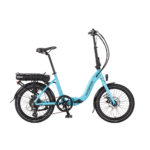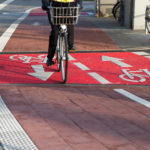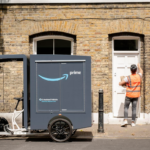Inspired on the thread:
http://www.pedelecs.co.uk/forum/threads/road-legal-1000w-electric-scooter.17048/
and despite the fact I am not talking about pedelecs, but a SEL (I do not know how to translate it into English, I would say this is a light electric motorcycle, which can be used without license / insurance / ...), I would like to ask opinions on this subject.
As I said in that thread, in Barcelona SELs with less than 1kW, a max speed of 25km/h and I believe a regulation in weight (50kg max), can be driven without license / insurance / ... They need to be driven through lanes specific for bikes. But this is not a huge restriction, since basically you can move to any place within the city with lane specific bikes.
There is a company offering these vehicles, which are used basically by tourists (rent). In fact, this is the only usage I have seen so far, locals do not use them.
http://www.urbanfun.es/scooter/e-zip-1000-pro.html
As you can see, the specs are a bit outmoded: a DD motor and SLA batteries (gasp!).
From what I see here, a 1kW / 25km/h max speed could easily be accomplished with standard motors, such as a BPM. The only odd issue is wheel size, those scooters use small rims, so I do not know how and if a BPM style motor could fit.
With 18650 batteries such as the Panasonic 18650PD, one could make wonders in terms of performance and weight.
How would you build from scratch such a vehicle? The idea would be a shape similar to the Currie model above, but possibly with slightly larger wheels to put a BPM style motor, better batteries, in general better (lighter) components, and having the same spirit as in the Currie, with the foldable handlebar, such that easily one may have a small and light "package" that can be put in a lift, charged easily at home and "parked" at say the balcony.
This product is apparently only useful in Barcelona, but I would not be surprised if in the future, European regulations allow a widespread usage of this kind of vehicles.
Any ideas are welcome.
http://www.pedelecs.co.uk/forum/threads/road-legal-1000w-electric-scooter.17048/
and despite the fact I am not talking about pedelecs, but a SEL (I do not know how to translate it into English, I would say this is a light electric motorcycle, which can be used without license / insurance / ...), I would like to ask opinions on this subject.
As I said in that thread, in Barcelona SELs with less than 1kW, a max speed of 25km/h and I believe a regulation in weight (50kg max), can be driven without license / insurance / ... They need to be driven through lanes specific for bikes. But this is not a huge restriction, since basically you can move to any place within the city with lane specific bikes.
There is a company offering these vehicles, which are used basically by tourists (rent). In fact, this is the only usage I have seen so far, locals do not use them.
http://www.urbanfun.es/scooter/e-zip-1000-pro.html
As you can see, the specs are a bit outmoded: a DD motor and SLA batteries (gasp!).
From what I see here, a 1kW / 25km/h max speed could easily be accomplished with standard motors, such as a BPM. The only odd issue is wheel size, those scooters use small rims, so I do not know how and if a BPM style motor could fit.
With 18650 batteries such as the Panasonic 18650PD, one could make wonders in terms of performance and weight.
How would you build from scratch such a vehicle? The idea would be a shape similar to the Currie model above, but possibly with slightly larger wheels to put a BPM style motor, better batteries, in general better (lighter) components, and having the same spirit as in the Currie, with the foldable handlebar, such that easily one may have a small and light "package" that can be put in a lift, charged easily at home and "parked" at say the balcony.
This product is apparently only useful in Barcelona, but I would not be surprised if in the future, European regulations allow a widespread usage of this kind of vehicles.
Any ideas are welcome.







